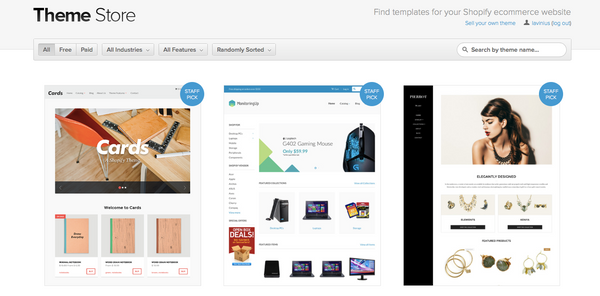Protect your privacy with a toll-free phone number for your Shopify store.
From the TheGenieLab US - TheGenieLab Blog blog

At TheGenieLab, we are working on releasing products for ecommerce companies, to complement our service offering. We’ve worked with dozens of ecommerce retailers and some requests keep coming up. One of these requests has to do with consultancy on the “look” of the website or the theme that the customer wants to use for their website. Some customers choose to build their own theme with us, but the ones that find themselves at the very beginning of their ecommerce adventure and have a limited budget sometimes find that a stock or pre-built theme works best for them. And that’s fine, as long as they choose the right one!
Before getting to the analysis, these are our must-haves in a theme:
- Handle multiple browsers properly, starting with Internet Explorer 9 and up.
- Mobile responsive and display properly on desktops, tablets and smart phones.
- Flexibility to set up customer sliders, navigation and website sections.
- Ability to edit page layouts.
- Modern Adaptable design.
- Strong product and lifestyle imagery. Images are more important than might you think.
- Clean code. Later on, many customers want their theme customized and having well functioning and understandable code becomes essential.
Beyond these must-haves, it would be great to buy a theme which is retina ready and offers a mega menu option. These may sound new to you if you are just setting up your website but you’ll get there soon.

Magento and Shopify
In terms of numbers of stores, WooComerce has become the largest ecommerce platform, but our analysis focusses on our two favourite platforms: Shopify and Magento. Most of our customers use one or the other and they are mature and well established technologies.
ThemeForest is one of the most important theme distribution platforms for a wide range of ecommerce platforms. Besides ThemeForest, we looked at Shopify’s Theme Store and Magento’s Connect Store. At the time of our research, ThemeForest presented 422 Magento Themes and 54 Shopify Themes. We checked back two days later there were 423 Magento and respectively 56 Shopify themes, reflecting the growth these platforms are experiencing.
On Shopify’s Theme Store there are 144 paid themes and 11 free themes. On Magento’s Connect Store are 890 PAID themes and 125 free themes. One thing that got our attention was that Magento’s offering was much larger than Shopify’s. At this point we avoided formulating any conclusion about competition among developers on Magento or Shopify platform.
For each theme we look at several variables: date when the theme was launched on ThemeForest, number of sales and current price. Using this data, we estimated the developer’s earned revenue by multiplying the number of sales with displayed price. Besides revenue, we estimated the number of monthly downloads, by dividing the sales by the months since launch.

What we found
Average monthly revenue
For the top 20 themes on ThemeForest, average monthly revenue for a Shopify theme is $1,411 and $6,394 for a Magento theme. Regarding the Magento theme, we should clarify: according to the data presented in the table, the average monthly revenue is $18,136 due to one company who grossed more than $1 million and is therefore a bit of an outlier. From a statistical perspective, outliers should be eliminated from analysis.
So, is that all the money that developers made? Not totally. Aside from ThemeForest there are other platforms where developers can make money by selling their themes, including Shopify and Magento themes stores. Feel free to make your estimates and multiply these numbers accordingly.
Prices
Magento themes are sold for prices varying between $64 and $99 (ThemeForest only). Shopify themes are sold for prices varying between $21 and $53 (ThemeForest only).
What makes the difference?
Features and functionality are essential for a theme’s success -there’s not much debate on that. However, all top 20 themes offer top notch functionality, are responsive and mobile optimized. Identifying the winner based on features alone does not really work in this case.
We considered that the buzz each developer generated should matter. We queried Google for “theme_name shopify/magento theme” and we registered the number of pages indicated for this. Considering that we live in the social era, what people talk about and how much they talk should matter for themes as well. Therefore, we took into consideration the number of reviews themes had.
Next we applied a Pearson product-moment correlation test to understand if there is a relationship between the number of sales and the number of pages indexed by Google OR the number of review. Results were more than revealing: for Shopify themes, 90% of sales can be explained by the number of reviews; GooglePages variable explains 72% of sales. For Magento themes, 54% of sales can be explained by the number of reviews; GooglePages variable explains aprox 47% of sales.
It seems that for Shopify themes, reviews explain more of the success than for Magento themes. This can be explained considering that Magento is a much more complex platform than Shopify. Therefore, buzz by itself will not necessarily produce success; rather success is backed-up by other characteristics (maybe developer’s reputation for example).
So, what can we take away from these results? First of all, we should be clear that correlation does not imply causation and in this limited research we are not proving causality but rather finding patterns of success, which we did by applying the correlation test.
